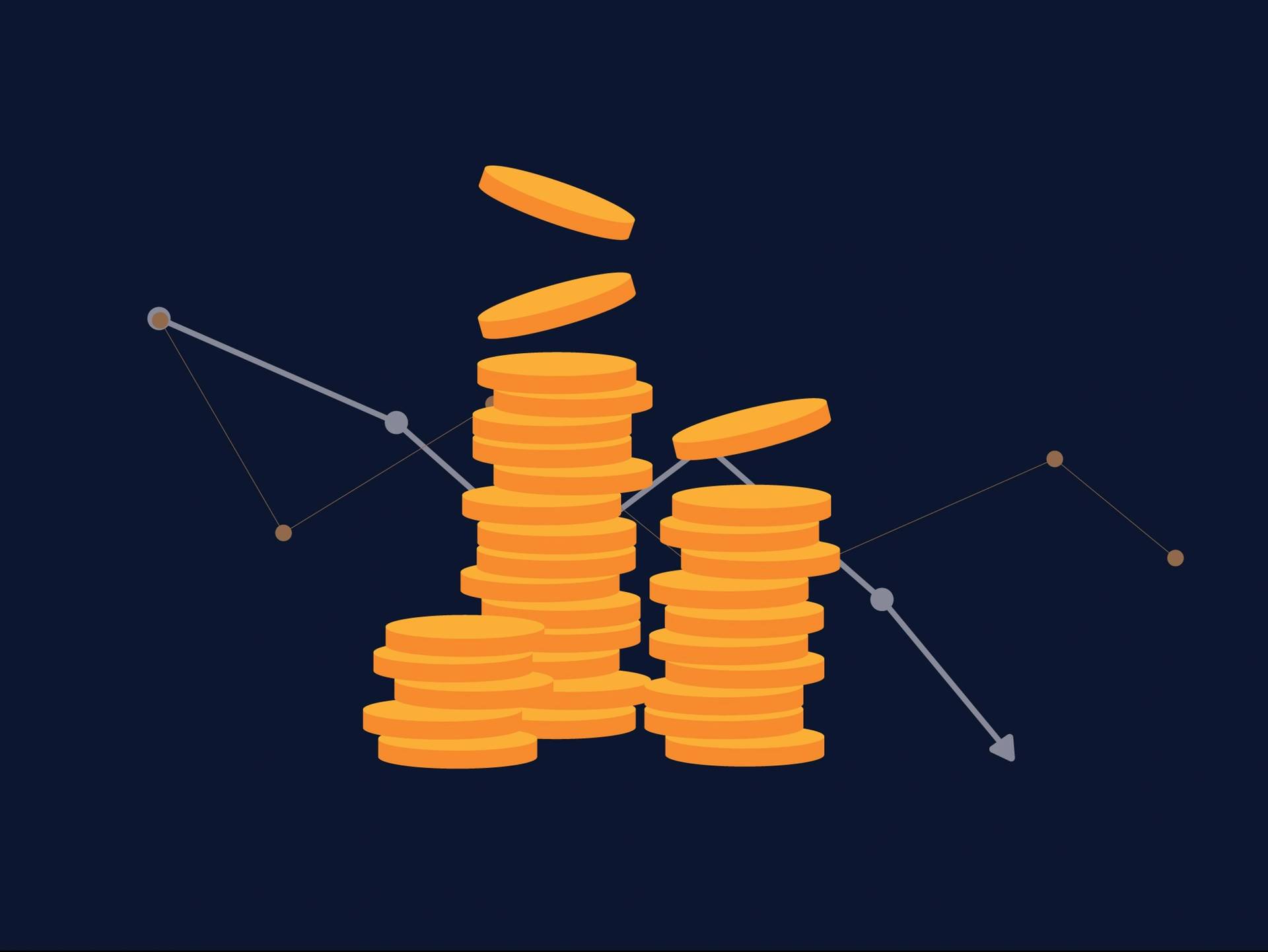위키 구독하기
Share wiki
Bookmark
Impermanent Loss
Impermanent Loss
DeFi(탈중앙화 금융)https://iq.wiki/wiki/defi에서 일시적 손실은 토큰을 보유하는 것과 비교하여 유동성을 유동성 풀에 투자할 때 발생하는 가치 손실을 의미합니다.[1][2][3]
이러한 현상은 사용자의 토큰 가격이 유동성 풀에 예치했을 때와 비교하여 변할 때 발생합니다. 변화가 클수록 손실이 커집니다.[4][5]
다시 말해, 일시적 손실은 예치 시점보다 인출 시점의 달러 가치가 낮다는 것을 의미합니다.
Trivia
- 일시적 손실은 또한 DeFi 사용자가 유동성을 제공하는 대신 자산을 보유했더라면 얼마나 더 많은 돈을 가졌을지를 보여줍니다.[6]
- 일부 유동성 풀은 다른 풀보다 일시적 손실에 훨씬 더 노출됩니다.[7]
- 일시적 손실은 단순히 자동화 시장 조성자(AMM)https://iq.wiki/wiki/automated-market-maker에서 토큰을 보유하는 것과 지갑에 보유하는 것의 차이입니다.
- AMM 내 토큰 가격이 어떤 방향으로든 괴리될 때 발생합니다. 괴리가 클수록 일시적 손실이 커집니다.
Introduction
Uniswap, SushiSwap, PancakeSwap, MindSwap과 같은 자동화 시장 조성자는 자금이 있는 사람이라면 누구든 시장 조성자가 되어 거래 수수료를 벌 수 있도록 합니다.[8]
비교적 좁은 가격대에 머무르는 자산으로 구성된 유동성 풀은 일시적 손실에 대한 노출이 적습니다. 스테이블코인 또는 코인의 다양한 래핑 버전은 비교적 제한된 가격대에 머물러 있습니다. 이 경우 유동성 제공자(LP)의 일시적 손실 위험이 줄어듭니다.[9]
Liquidity Pools
유동성 풀은 종종 두 가지 자산으로 구성되며, 하나는 DAI와 같은 스테이블코인이고 다른 하나는 이더리움(ETH)https://iq.wiki/wiki/ethereum과 같은 변동성이 큰 암호화폐일 수 있습니다.
Examples of Impermanent Loss
Scenario A
프로바이더는 DAI와 (ETH) 모두에 동일한 수준의 유동성을 제공해야 하지만 갑자기 ETH 가격이 상승합니다.[10]
이것은 차익거래 기회를 만듭니다. 왜냐하면 유동성 풀의 ETH 가격이 실제 세계에서 일어나고 있는 일을 반영하지 않기 때문입니다. DAI와 ETH의 비율이 균형을 유지하려면 다른 거래자들이 할인된 가격으로 ETH를 매수하여 다시 균형을 맞출 때까지 매수할 것입니다.[11]
차익거래 후 유동성 제공자는 더 많은 DAI와 약간 적은 ETH를 보유하게 될 수 있습니다. 손상 손실은 자산의 현재 가치를 거래소에 그대로 두었을 경우의 가치와 비교하여 평가합니다.
손실은 제공자가 유동성을 영구히 인출하기로 결정할 때만 영구적인 것이 됩니다.[12]
Mathematical Scenario
이 간단한 예에서, 50% ETH와 50% DAI로 구성된 Uniswap 풀에 유동성 제공자가 한 명만 있으며, 10 ETH와 1000 DAI를 풀에 제공합니다. 유동성 제공자가 한 명인 유동성 풀은 현실적인 시나리오를 제시하지 않지만 일시적 손실이 가상적으로 어떻게 작동하는지 이해하는 데 좋은 예를 제공합니다.[13]
가상적으로 사용자가 유동성 풀에 진입할 때 ETH는 100달러입니다.
- 1 ETH 가격 = 100 DAI
- 풀은 10 ETH와 1000 DAI로 구성됩니다.
그런 다음 ETH 가격이 200달러로 두 배가 됩니다.
- 1 ETH 가격 = 200 DAI
- Uniswap 외부의 차익거래자들이 가격이 200 DAI에 도달하고 외부 거래소와 일치할 때까지 해당 사용자 풀의 모든 ETH를 매수합니다.
- x * y = k 공식에 따라 유동성 풀은 이제 다음과 같이 구성됩니다.
- 7.071 ETH와 1414.21 DAI
- ETH의 새로운 가격인 200달러에서 유동성 풀에 있는 보유 자산의 총 가치는 다음과 같습니다.
- 1414.21달러 + 1414.21달러 = 2828.42달러
- 사용자가 원래 10 ETH와 1000 DAI를 그대로 보유했더라면 유동성 풀 외부에 있는 보유 자산의 총 가치는 다음과 같습니다.
- 2000달러 + 1000달러 = 3000달러
- 일시적 손실은 다음과 같습니다.
- 3000달러 – 2828.43달러 = 171.57달러[22]
Balancer Uneven Pools
Balancer 프로토콜을 사용하면 AMM이 다양한 토큰에 고르게 분산되지 않은 유휴 자본을 완전히 활용할 수 있습니다. 누구든 Uniswap 풀을 사용하여 유동성을 제공할 수 있으며, ERC20 토큰으로 제공된 가치가 ETH로 제공된 가치와 같아야 합니다. 즉, 모든 Uniswap 풀은 균등한 “50/50” 풀입니다.[14]
불균형 Balancer 풀은 더 높은 슬리피지를 발생시키며, 이는 거래량, APR 및 일시적 손실을 감소시킵니다.[15]
Balancer를 사용하면 토큰 보유자가 토큰을 믿는 경우 해당 토큰에 대한 강력한 노출을 유지하면서 동시에 Balancer 풀을 통해 거래 수수료를 벌 수 있습니다.[16]
Example of Uneven pools
이론적인 예로 그림 1을 참조하십시오. 사용자가 ETH에 대해 매우 낙관적이고 ETH와 DAI로 1,000달러 상당의 유동성을 제공하려고 한다고 가정해 보겠습니다. 그들은 각각 다른 ETH/DAI 가중치를 가진 세 가지 다른 유동성 풀(50/50, 80/20, 95/5)을 고려합니다. 아래 차트는 초기 ETH 가격이 250달러라고 가정할 때 ETH 가격 변화에 따라 풀 가치가 어떻게 변하는지 보여줍니다.[17]
차트는 불균형 풀이 ETH만 보유하는 것과 훨씬 더 밀접한 상관관계를 허용하는 방법을 보여줍니다.[18] 선택된 토큰과 더 높은 가치 상관관계를 허용하는 동시에 불균형 Balancer 풀은 더 높은 슬리피지를 발생시키며, 이는 거래량과 APR을 감소시킵니다.
동일한 논리는 세 개 이상의 토큰으로 구성된 풀에도 적용됩니다. 예를 들어, 네 개의 토큰과 40/40/10/10 가중치를 가진 풀은 첫 번째 두 토큰 간의 거래를 분석할 때 50/50 풀처럼 작동하지만 첫 번째와 마지막 토큰(40/10 = 80/20) 간의 거래를 분석할 때 80/20 풀처럼 작동합니다.[19]
MindSwap
Everipedia 팀의 이국적인 AMM인 MindSwap은 높은 수수료를 사용하여 일시적 손실을 상쇄합니다. 유동성 제공자는 누군가가 IQ와 PredIQt 토큰 간의 거래에 자신의 풀을 사용할 때마다 0.7%의 거래 수수료를 받습니다.
Summary
AMM 프로토콜은 유동성 풀과 제공자에게 거래 수수료를 지불하고 종종 사용자에게 플랫폼 토큰을 배포합니다. Uniswap에서 유동성 제공자는 거래가 발생할 때마다 0.3%의 수수료를 받습니다. 유동성 제공자에게 더 많은 거래와 더 큰 변동성은 더 많은 돈을 의미합니다. 프로토콜에서 충분한 거래량이 있으면 유동성 제공자는 일시적 손실 발생을 무효화하기 위해 수수료를 축적할 수 있습니다.[20]
AMM은 프로젝트 토큰을 통해 유동성 제공자에게 보상 인센티브를 제공하기도 합니다. 사용자가 토큰 보상을 배포하는 지정된 Uniswap 유동성 풀에 토큰을 제공하는 경우 Uniswap에서 UNI 토큰을 획득할 수 있습니다. 적절한 Balancer 또는 Curve Finance 풀에 토큰을 제공하면 사용자는 BAL 또는 CRV 토큰을 획득할 수 있습니다. 이러한 토큰은 탈중앙화 금융 생태계의 다른 곳에서 사용되고 거래소에서 거래될 수 있습니다. 수수료 축적과 보상 토큰의 가치는 일시적 손실을 상쇄할 뿐만 아니라 유동성 제공자가 수익을 얻을 수 있도록 합니다.[21]
잘못된 내용이 있나요?
